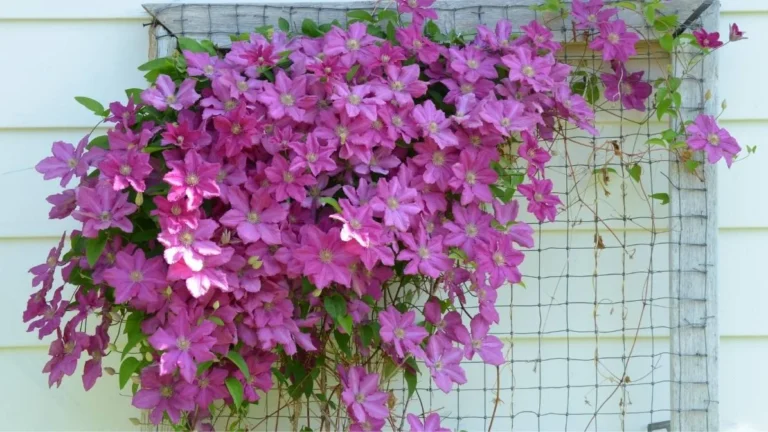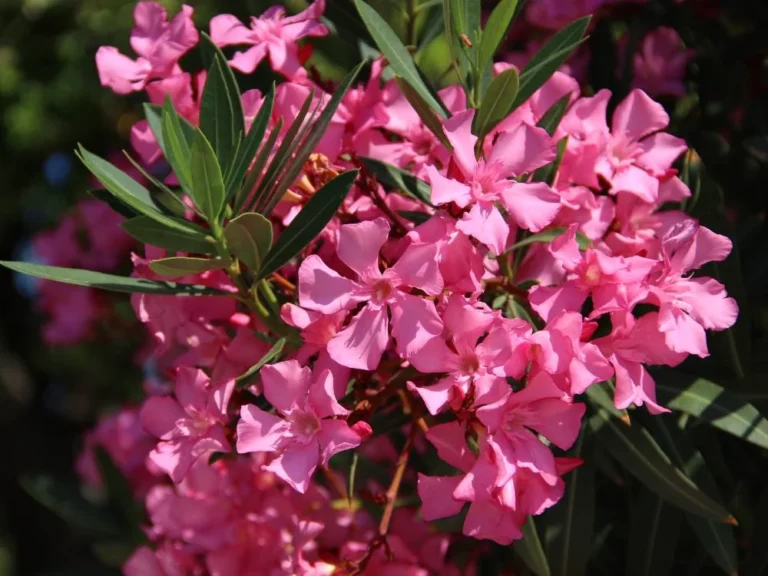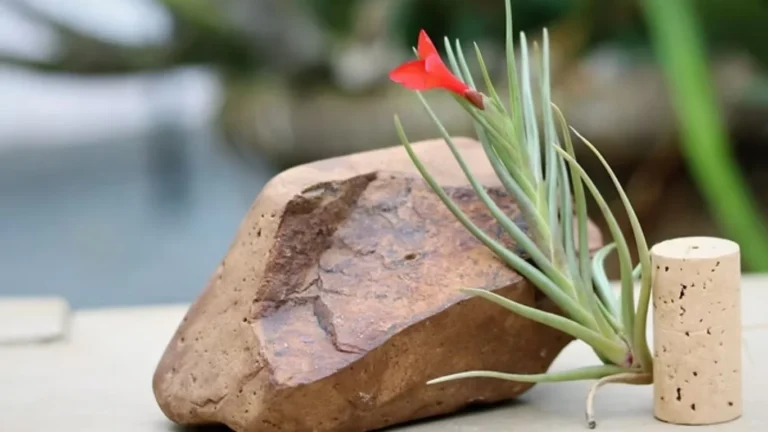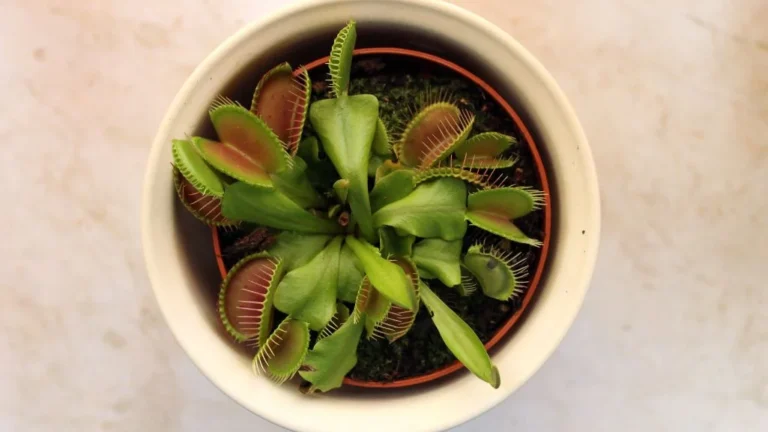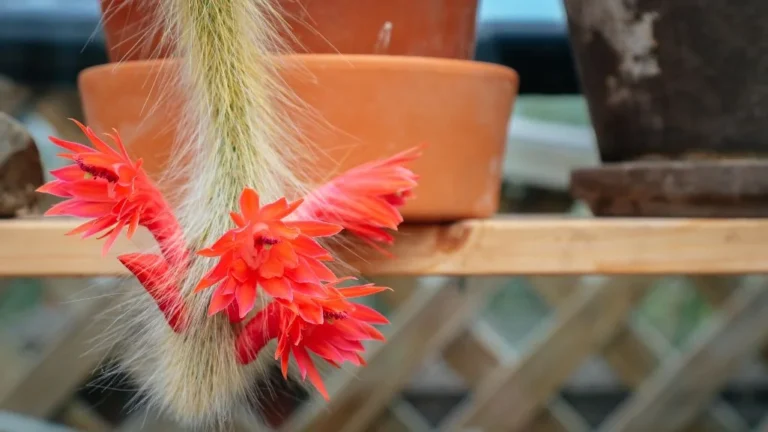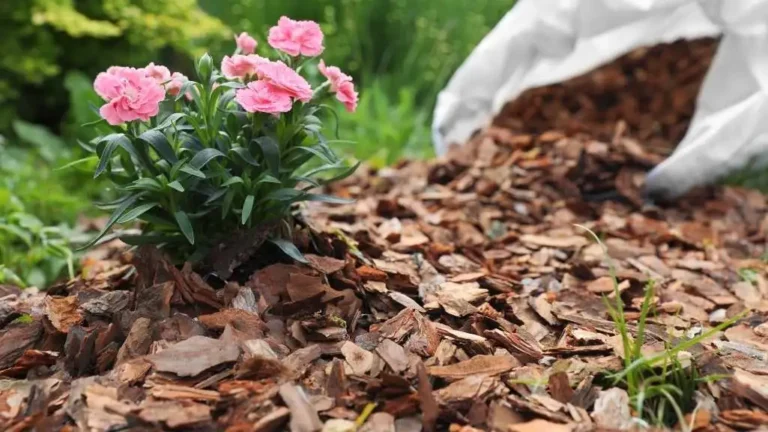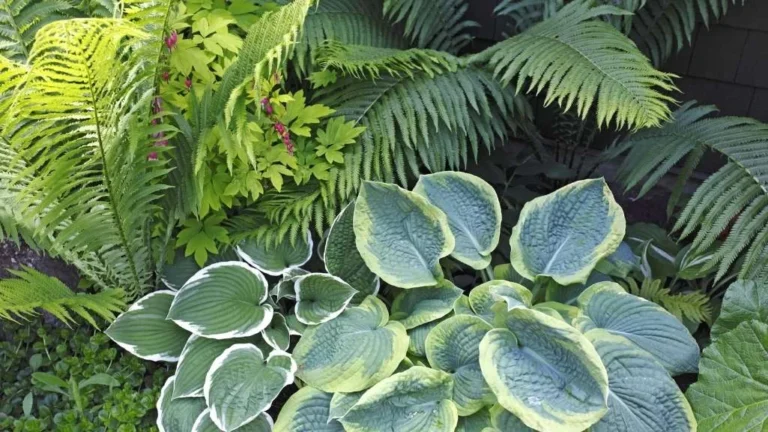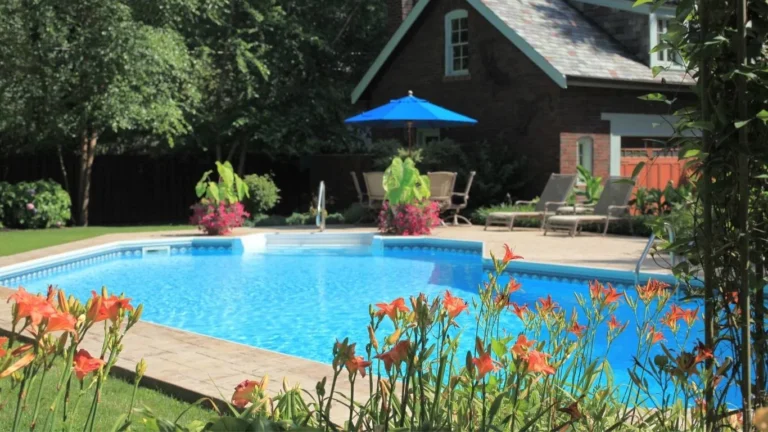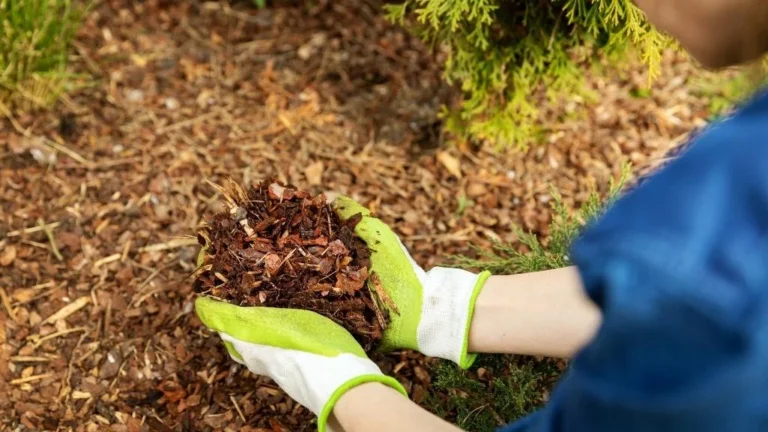
Spider plants are one of the common hanging houseplants that are known for their offshoots, which grow from the mother plant and spread like spider legs. Small white flowers in the rainy season increase their beauty more. If you are looking for an easy-growing, pet-friendly plant, then spider plant is the one. Place it in a bright place, away from direct sun and water, when the soil dries out, and it’s good to go.
Growing Requirements
- Light: Indirect sunlight.
- Soil: Well-draining, loamy soil with a slightly acidic to neutral pH.
- Water: Water when the top inch of soil is dry.

Boston fern has lush, green, vibrant, arching leaves that add a tropical vibe to the home. Ferns like to be in a humid environment, so make sure to spray water on their leaves or place them near a humidifier.
Growing Requirements
- Light: Indirect light or partial shade.
- Soil: Nutrition-rich, well-draining soil that retains moisture with a slightly acidic to neutral pH.
- Water: Keep soil consistently moist.

Areca palm, also known as butterfly palm, is a good choice for keeping in the bedroom as this plant helps to remove toxins. If you want to fill up a bright corner with pet-friendly large plants, then go for it. Provide bright light, keep the soil moist, and ensure proper nutrition for the areca palm to thrive.
Growing Requirements
- Light: Bright, indirect light.
- Soil: Well-draining, slightly acidic to neutral soil with good moisture retention.
- Water: Water when the top inch of soil is dry.

Calathea is known for its different leaf patterns. I recommend calathea for experienced plant lovers because, as a beginner, it may take much work to make a calathea survive. But its variations in patterned leaves and the quality of non-toxic pets are really fascinating. Generally, calathea needs high humidity, temperature between 65-80-degree Fahrenheit, bright indirect light, and moist soil.
Growing Requirements
- Light: Indirect light.
- Soil: Well-draining, rich, and slightly acidic soil with high organic content.
- Water: Keep the soil consistently moist but not soggy.
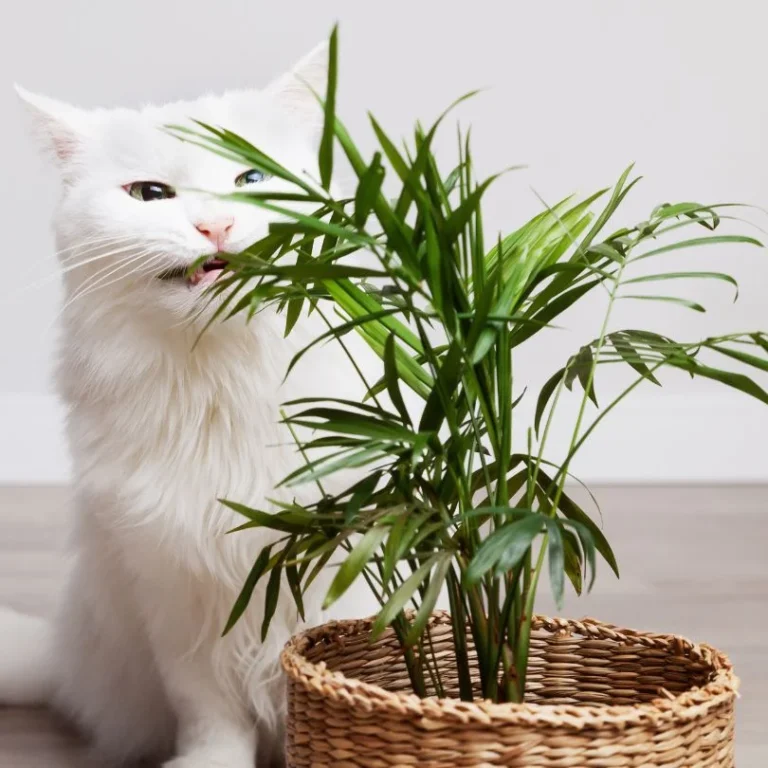
If you are looking for large, pet-friendly plants, palm plants are a good choice. Among the palms, bamboo palms give a unique appeal. Besides, this plant requires low maintenance and is less prone to pests. Bamboo palms can survive in low light with occasional watering.
Growing Requirements
- Light: Indirect light
- Soil: Well-draining, rich, loamy soil with a slightly acidic to neutral pH.
- Water: Water when the top inch of soil is dry
Parlor Palm (Chamaedorea elegans)
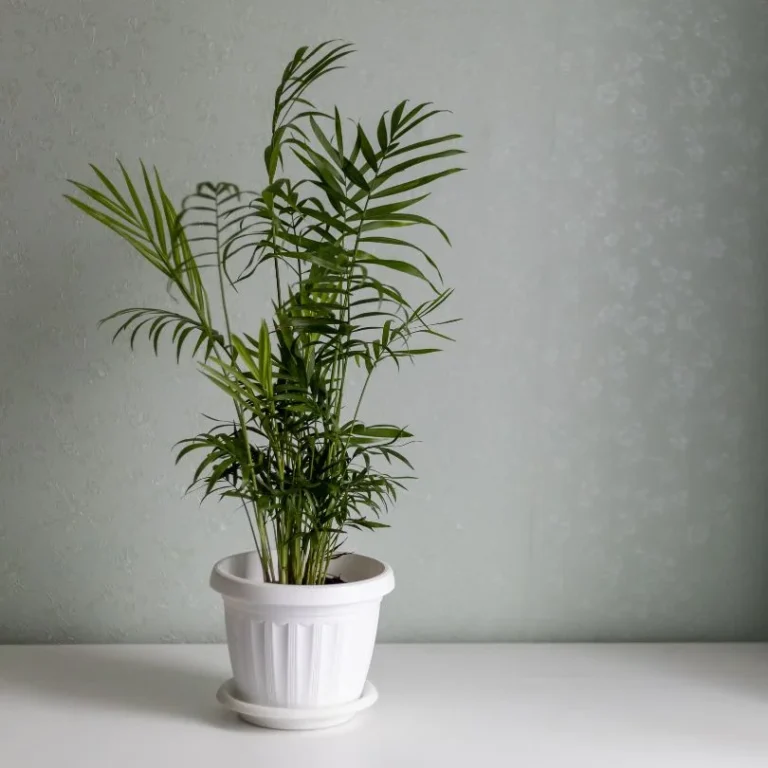
I find parlor palm adorable because of its small shape and lush foliage. Usually, cats jump everywhere from tabletop to shelves. The compact-shaped parlor palm is a good choice to place on the tabletop, shelves, and corner tables. Parlor palm requires bright, indirect light and moist soil.
Growing Requirements
- Light: Low to bright indirect light
- Soil: Well-draining, peat-based soil with a slightly acidic to neutral pH.
- Water: Water when the top inch of soil is dry.
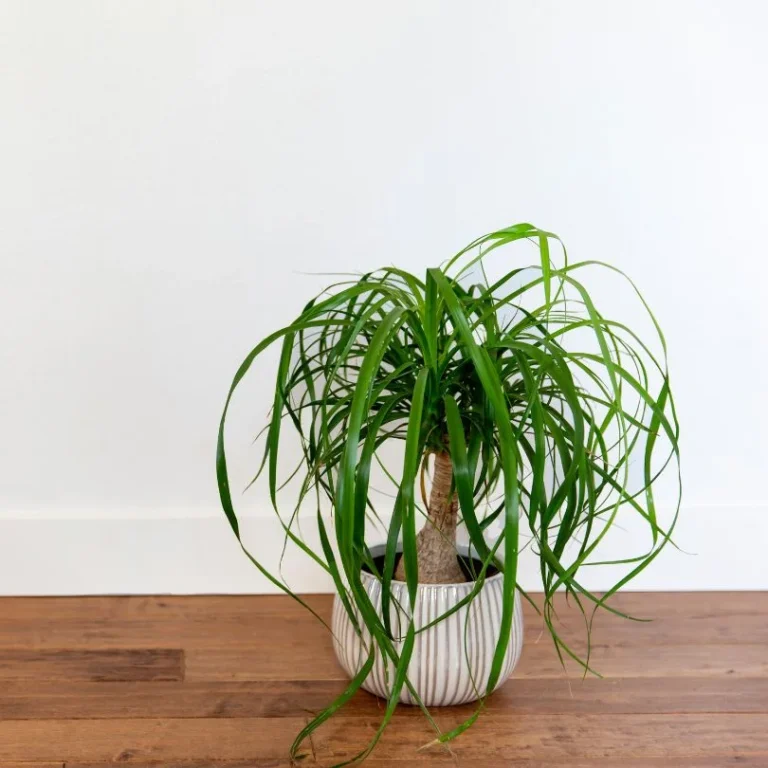
PalmYobab/Getty image
If you want a slow-growing, pet-friendly plant with an eye-catching look, then go for ponytail palm. The ponytail palm, also known as the elephant foot tree, has a thick base resembling an elephant’s foot, and curly leaves hang down like a ponytail. The ponytail plant is a drought-tolerant plant, which makes it a perfect choice for busy people and easy to care for.
Growing Requirements
- Light: Bright, indirect light
- Soil: Well-draining, sandy or loamy soil with a slightly acidic to neutral pH.
- Water: Allow soil to dry out before watering.
Haworthia (Haworthia spp.)

Are you a succulent lover? If yes, then you will be amused to know that Haworthia is pet-friendly. Haworthia is popular around the world because of its Rosset-shaped appearance. As Haworthia plants are small in shape, they can be kept anywhere from tabletop to windowsill. Hawarthia requires bright, indirect light and minimal water. It requires water when the soil dries out completely as it holds water in its leaves.
Growing Requirements
- Light: Bright, indirect light
- Soil: Well-draining, sandy, or cactus mix soil with a slightly acidic to neutral pH.
- Water: Allow soil to dry out between watering.
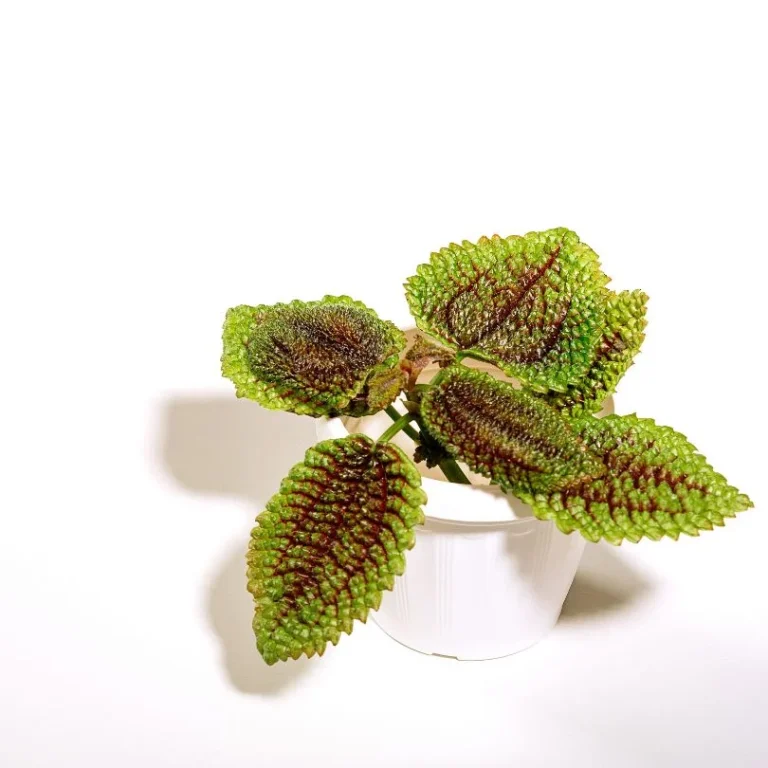
Want to add something unique to your home? Friendship plant is the one. This small bronze-tinted plant is easy to grow and care for. Friendship plants are quite adaptive to any environment, but they thrive in bright, indirect light and prefer warm, humid environments. This plant gets its name because it’s easy to propagate and share with friends. Take a cutting, plant it in the soil, and it will grow into a new plant.
Growing Requirements
- Light: Indirect light
- Soil: Well-draining, peat-based soil with added perlite or sand for aeration and a slightly acidic to neutral pH.
- Water: Keep soil moist, not soggy.
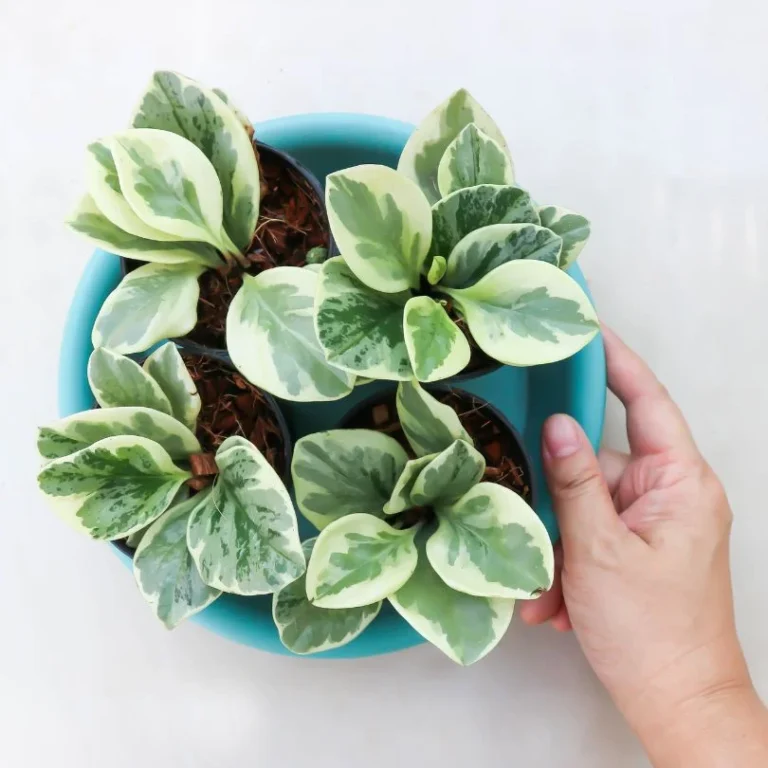
The Baby Rubber Plant is a charming and easy-to-care-for houseplant with thick, glossy, oval-shaped leaves that can range from deep green to variegated shades of cream and light green. Despite its name, it’s not related to the rubber tree but shares a similar look with its shiny, smooth foliage. If you have a small, low-lighted space, a baby rubber plant is a good option. Because this compact plant can adjust to any lighting condition, it is also very forgiving for watering negligence.
Growing Requirements
- Light: Low to bright, indirect light
- Soil: well-draining, peat-based soil with a slightly acidic to neutral pH.
- Water: Once the top layer of the soil dries out.

Want something both colorful and non-toxic to pets? Polka dot is the answer. Polka dot has vibrant colors and a variety of different colors. A polka dot is a colorful plant, so it requires bright light. Otherwise, it can gradually lose its beauty and take a leggy shape. Besides bright light, it requires a warm, humid environment with moist soil.
Growing Requirements
- Light: Bright, indirect light
- Soil: Well-draining, rich, loamy, and slightly acidic soil.
- Water: Keep soil moist, not soggy.

A long-living, pet-friendly, flowering plant. The Christmas Cactus is a popular holiday houseplant known for its flat and arching stems that produce vibrant flowers in shades of pink, red, white, or purple. Unlike desert cacti, the Christmas Cactus is a tropical species that thrives in bright, indirect light and prefers high humidity. It blooms around the holiday season, typically in late fall to early winter, making it a festive addition to homes.
Growing Requirements
- Light: Bright, indirect light
- Soil: Well-draining, nutrition-rich, slightly acidic.
- Water: Let the soil dry out before watering.

The velvet plant is a tropical plant. This plant is popular for its vibrant purple color and velvety texture. Besides, it is pet-friendly. Velvet plants thrive in bright, indirect light, which helps maintain their vibrant purple hue. Direct sunlight should be avoided, as it can scorch the leaves and diminish their color. It enjoys warm temperatures between 60-75°F (16-24°C) and benefits from high humidity, making it ideal for bathrooms or humidified rooms. While it can produce small orange flowers, they are often removed due to their unpleasant smell, allowing the plant to focus energy on its striking foliage.
Growing Requirements
- Light: Bright, indirect light.
- Soil: Well-draining, rich, loamy soil.
- Water: Keep the soil moist, not soggy.
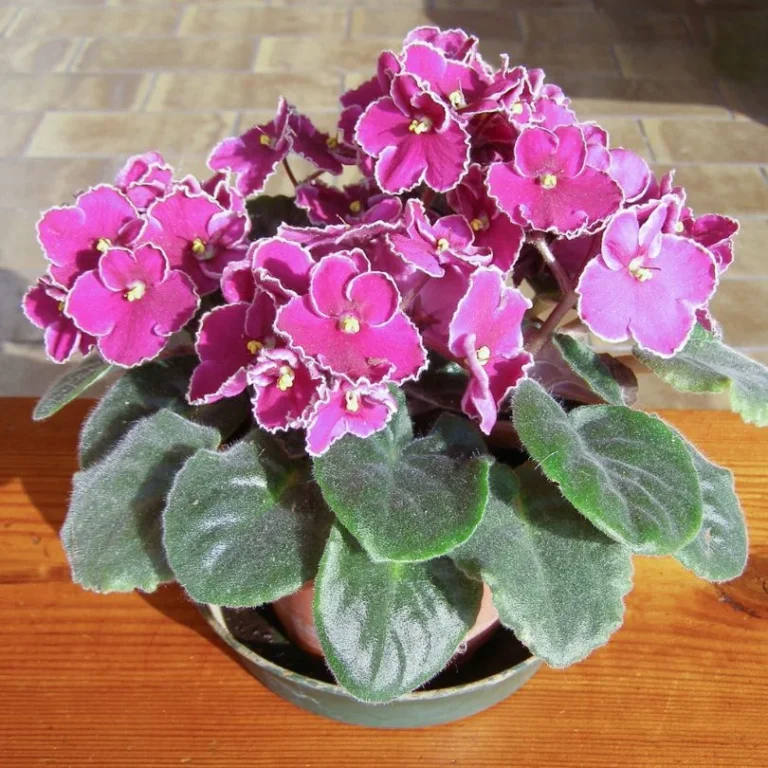
If you want to fill your windowsills and table tops with vibrant, colorful flowering plants, African violet is a good option as a pet-friendly plant. African Violets are relatively easy to care for, thriving in bright, indirect light and well-draining soil. They prefer a warm, humid environment and need to be watered carefully, ideally from the bottom, to avoid getting water on their leaves, which can cause spotting. With the right care, they can bloom year-round, adding a cheerful touch of color to any indoor space.
Growing Requirements
- Light: Indirect light.
- Soil: Well-draining, slightly acidic soil, ideally a mix containing peat, vermiculite, and perlite.
- Water: Keep soil moist; avoid getting leaves wet.
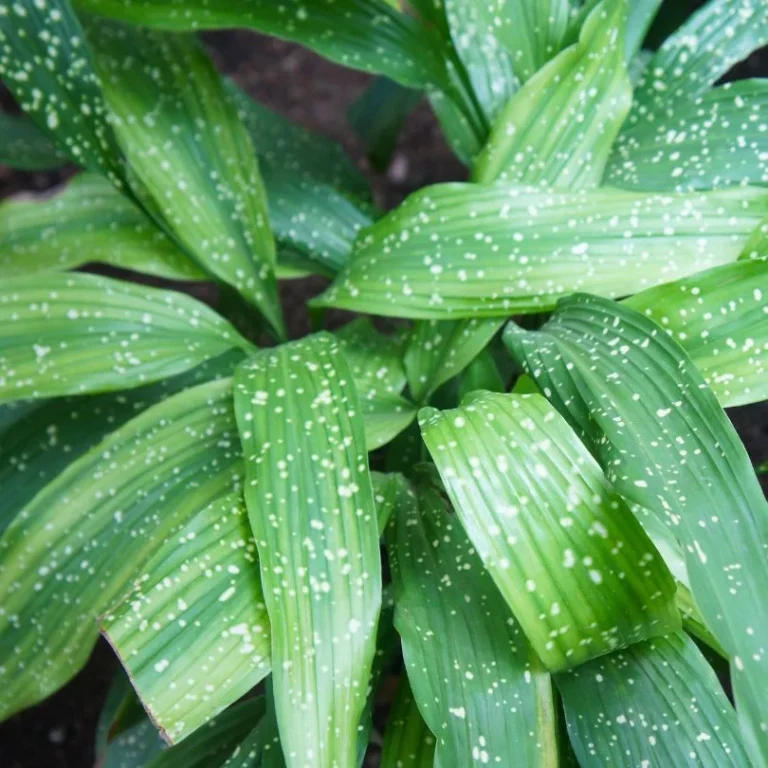
A hardy, low-maintenance, neglect-tolerant, pet-friendly plant. Many qualities! The Cast Iron Plant is ideal for low-light areas, and it’s also very tolerant of infrequent watering, making it perfect for busy or novice gardeners. It grows slowly and can live for many years with minimal care. It gets its name from its durability, as it can withstand neglect, low light, poor soil, and a wide range of temperatures.
Growing Requirements
- Light: Low to bright indirect light
- Soil: Well-draining, loamy soil with a mix of peat and sand.
- Water: Allow soil to dry out between watering.
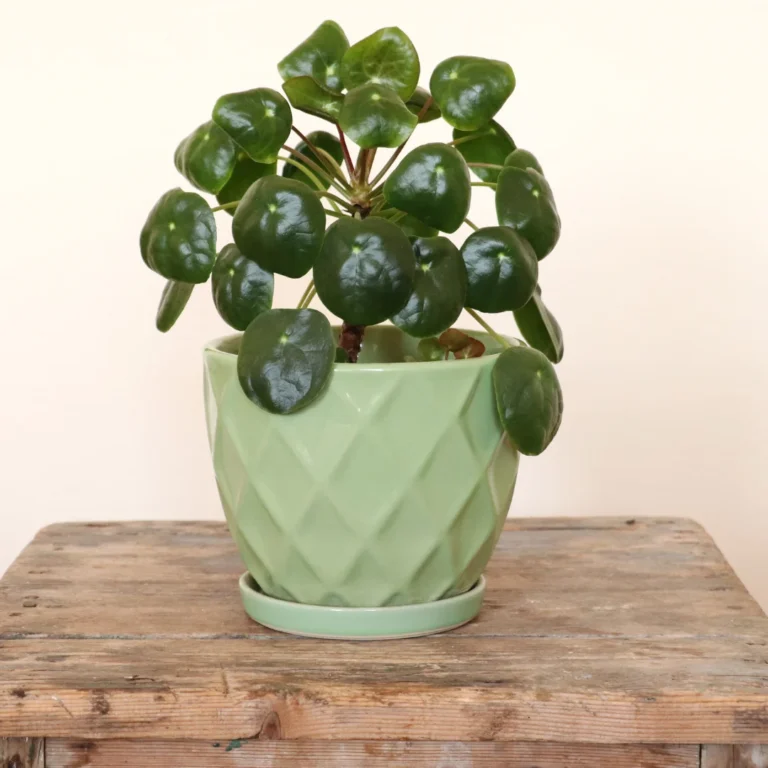
Chinese money plant, the UFO plant, is native to China. This plant is known for its round coin-shaped leaves and easy-to-care requirement. Chinese money plants can fit anywhere because of their small shape. This plant thrives in bright, indirect light and prefers well-draining soil. It doesn’t like to be waterlogged soil, so ensure good drainage and stay careful while watering. This plant is also known for its ability to produce “pups” or small offshoots, which can be easily propagated and shared, adding to its reputation as a plant of good fortune and friendship.
Growing Requirements
- Light: Bright, indirect light
- Soil: Well-draining soil, slightly acidic to neutral soil. Cactus mix is a good option.
- Water: Allow soil to dry out before watering.
Fittonia (Fittonia albivenis)

Fittonia is a small-sized, pet-friendly plant that has a distinctive feature of veined leaves, which come in a variety of colors, including white, pink, red, and sometimes even deep magenta. This plant is well suited for small pots and terrariums. Caring for Fittonia involves keeping the soil consistently moist but well-drained, as it doesn’t like to dry out completely. It also enjoys high humidity, so regular misting or placement in a humid room like a bathroom can help it thrive. It also requires bright, indirect light to maintain its leaves’ vibrant color.
Growing Requirements
- Light: Bright, indirect light
- Soil: Well-draining, moisture-retentive, nutrition-rich, slightly acidic soil.
- Water: Keep soil consistently moist.
Majesty Palm (Ravenea rivularis)

If you are looking for a tall, bushy, pet-friendly plant, you can consider majesty palm. This tropical plant prefers bright light but can adjust to low light conditions also, so you don’t need to worry about the placement. However, in the case of watering, this plant needs moist soil and a humid environment.
Growing Requirements
- Light: Bright, indirect light.
- Soil: Well-draining, slightly acidic soil.
- Water: Keep soil moist, not soggy.
Prayer Plant (Maranta leuconeura)
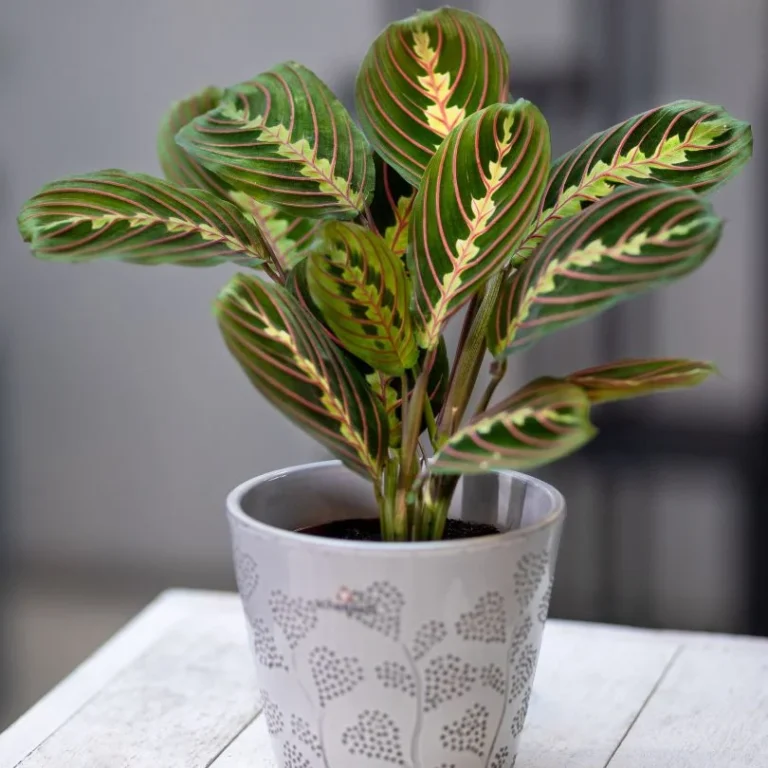
When I first saw the Prayer Plant at the nursery, I was immediately captivated by its vibrant patterns. But what truly drew me in was its nightly ritual. When I came to know the prayer plant is pet safe, it became the cherry on top for me. Prayer plants require bright, indirect light, a warm environment, and moist soil. The most important thing for prayer plants is that they require high humidity levels. So, it’s best to install a humidifier and keep the plant with other plants so that humidity levels can be maintained.
Growing Requirements
- Light: Indirect light
- Soil: Well-draining, rich soil with a mix of peat, perlite, and potting soil to retain moisture while preventing waterlogging.
- Water: Keep soil moist, not soggy.
Zebra Plant (Aphelandra squarrosa)

I bought a zebra plant because of its bold striped leaves and pet-safe quality. The dark green foliage, crisscrossed with bright white veins, creates an eye-catching pattern. I was surprised when the plant began to produce a bright yellow flower spike. It was like a little burst of sunshine on my windowsill. Zebra plants require a bit more attention than other plants. It prefers bright, indirect light, high humidity, and consistently moist soil.
Growing Requirements
- Light: Bright, indirect light
- Soil: Well-draining, rich, slightly acidic soil.
- Water: Keep soil consistently moist.
Maidenhair Fern (Adiantum spp.)
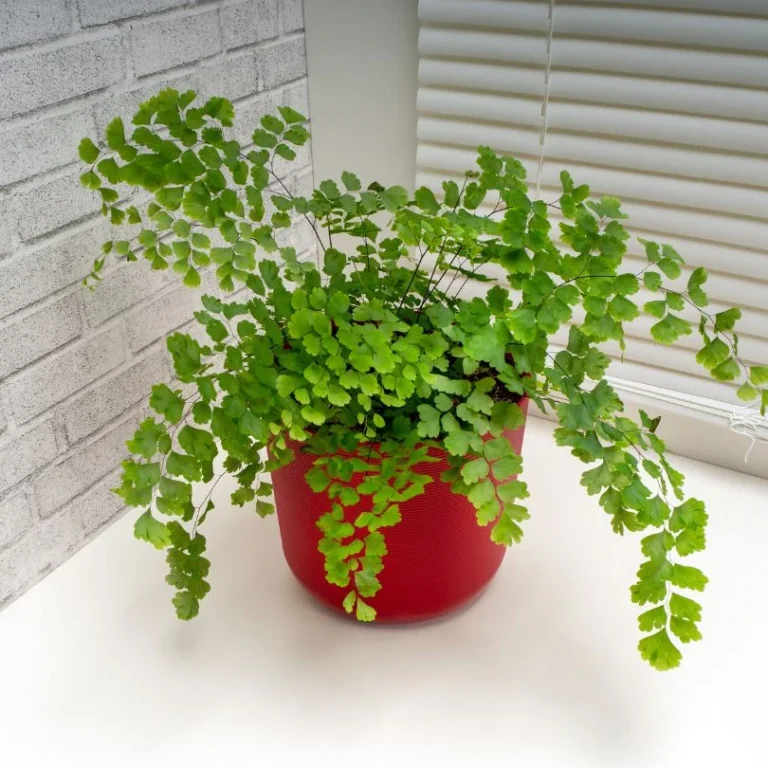
Maidenhair Fern is a delicate plant. This plant thrives under the care of dedicated plant lovers. Its fragile beauty rewards those who give it the attention it deserves. At first, I worried about keeping it happy, knowing that Maidenhair Ferns can be a bit finicky. But over time, I found a rhythm—consistent watering, misting to maintain humidity, and ensuring it got bright, indirect light. It became a quiet ritual for me, checking in on my fern each day, making sure the soil was moist but never soggy and it wasn’t getting too much light.
Growing Requirements
- Light: Bright, indirect light
- Soil: Well-draining, rich, slightly acidic soil.
- Water: Keep soil consistently moist.
Swedish Ivy

If you want an easy-growing, fuss-free, flowering plant, Swedish Ivy is the one. It didn’t need constant attention, just a bit of water here and there, and it was good to go. I also noticed that it seemed to adapt to different spots in my home; whether it was in a bright room or a slightly shadier corner, it kept growing, its leaves always looking fresh and green. Occasionally, you’d notice small, pale purple flowers starting to appear, which means the ivy is happy in its new home.
Growing Requirements
- Light: Bright, indirect light
- Soil: Well-draining, slightly acidic to neutral soil pH.
- Water: Keep soil consistently moist.
Lipstick Plant (Aeschynanthus radicans)

Lipstick plant! When I heard the name, I became curious about the plant’s appearance. This plant has vibrant, tubular red or orange flowers that emerge from glossy, dark green leaves, resembling the shape of a lipstick tube. Lipstick plant requires bright, indirect light, moist soil, and a humid environment.
Growing Requirements
- Light: Bright, indirect light
- Soil: Well-draining, organic matter rich, slightly acidic.
- Water: Keep soil consistently moist.

I bought Money Tree because of its beautiful, interesting braided trunk and lush green leaves. If you are looking for braided plants and believe a money tree brings fortune, then go for it. Keep the plant in a bright place and keep the soil moist. The Money Tree doesn’t demand much; it just needs a bit of attention here and there. Dust off the leaves, rotate the pot to keep it growing evenly, and observe it thrive.
Growing Requirements
- Light: Bright, indirect light
- Soil: Well-draining, loamy soil with slightly acidic to neutral pH.
- Water: Keep soil consistently moist.
Hoya plant (Hoya carnosa)
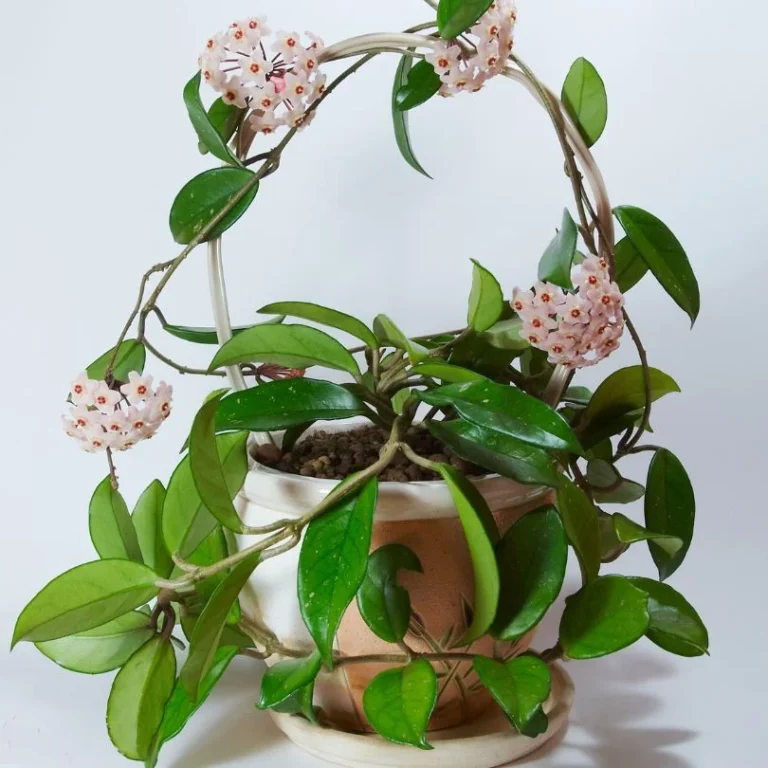
I am really captivated by Hoya’s thick, glossy leaves and the promise of star-shaped flowers. Place it in a bright spot with indirect light and water only when the top of the soil is dry. To keep it happy, add a pebble tray for humidity and feed it a diluted fertilizer once a month during the growing season.
Growing Requirements
- Light: Bright, indirect light
- Soil: well-draining, light, and airy soil, ideally a mix of potting soil, perlite, and orchid bark.
- Water: When the top layer of soil dries out, avoid overwatering.
Creating a Pet-Friendly Plant Environment
I am both a plant and pet lover. I have always dreamed of decorating my home with lots of plants. However, creating a pet-friendly environment was very challenging as I have a cat named ‘Mochi’. I spent hours reading up on pet-safe plants and made a list of those that were not only non-toxic but also easy to care for, which I shared with you. Besides choosing pet-safe plants gradually, I adapted the following techniques, which helped me create a pet-friendly environment.
Placement
The first thing I did after buying pet-friendly plants was think about placement. I had read that it’s best to keep plants out of reach of pets, especially those who like to chew on things. Mochi has a habit of gnawing on anything new, so I decided to use hanging planters for my more delicate plants. I also placed some of the heavier pots on high shelves, making sure they were stable and out of her reach
Training
Next came training. I knew I couldn’t just rely on keeping plants out of my Mochi’s way; I needed to teach her that they were off-limits. Every time she showed interest in a plant, I gently redirected her attention with a toy and gave her a treat when she complied. Over time, she started associating the plants with being something she should ignore rather than a new toy to play with.
Monitoring
Monitoring is the key. Even after training, pets are pets! They are curious. I keep a close eye on my cat’s behavior, especially when I bring new plants into the home. If she seems particularly fascinated by a plant, I immediately move it to a safer spot.
Pet-Safe Alternatives
Giving alternatives is the best way to distract. So, I bought a pot of cat grass and placed it near her favorite lounging spot. She was instantly drawn to it, and it quickly became her go-to for nibbling. I also made sure to have plenty of chew toys around, giving her a safe outlet for her chewing instincts. This helped to keep her occupied and less interested in my other plants.
Regular Maintenance
I check my plants frequently for any signs of damage, either from my Mochi’s occasional curiosity or from natural causes. I found that healthy, well-maintained plants were less likely to catch her attention. I also kept the plants clean, trimming any dead leaves or stems that might tempt her to play with them.
Incorporating plants into your home doesn’t mean you have to compromise on the safety of your pets. With a variety of pet-friendly plants available, you can enjoy the benefits of greenery while ensuring a safe environment for your furry friends.


